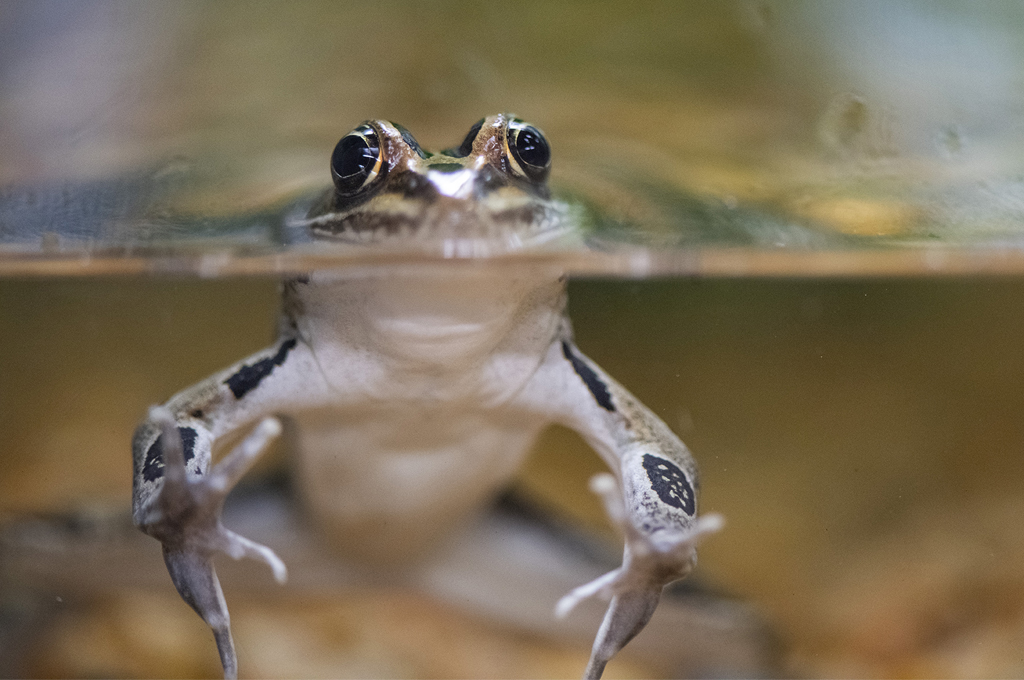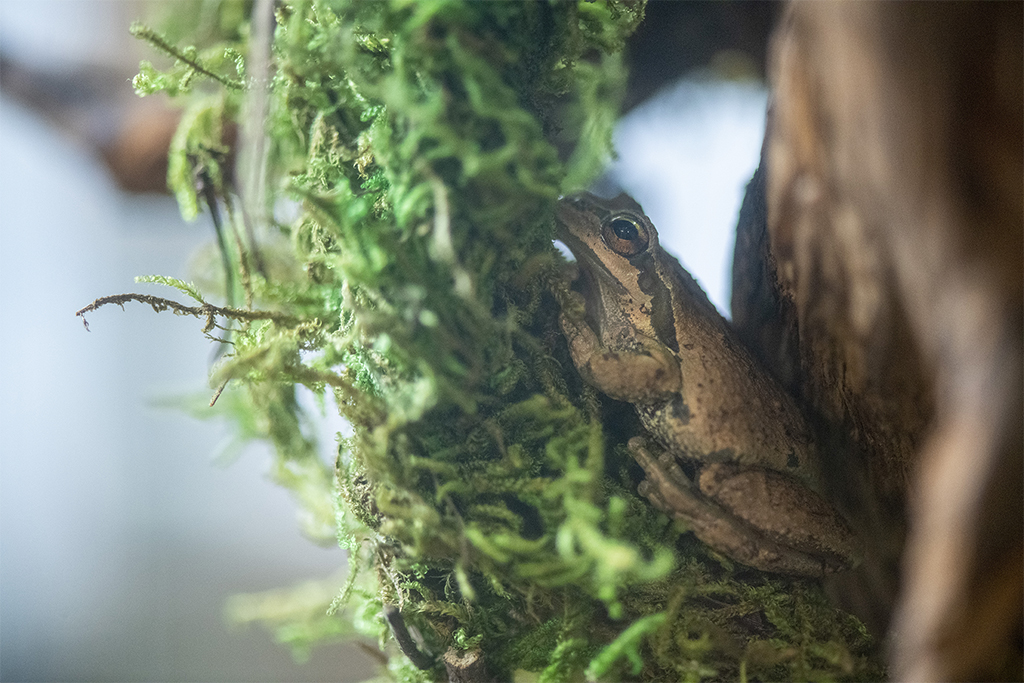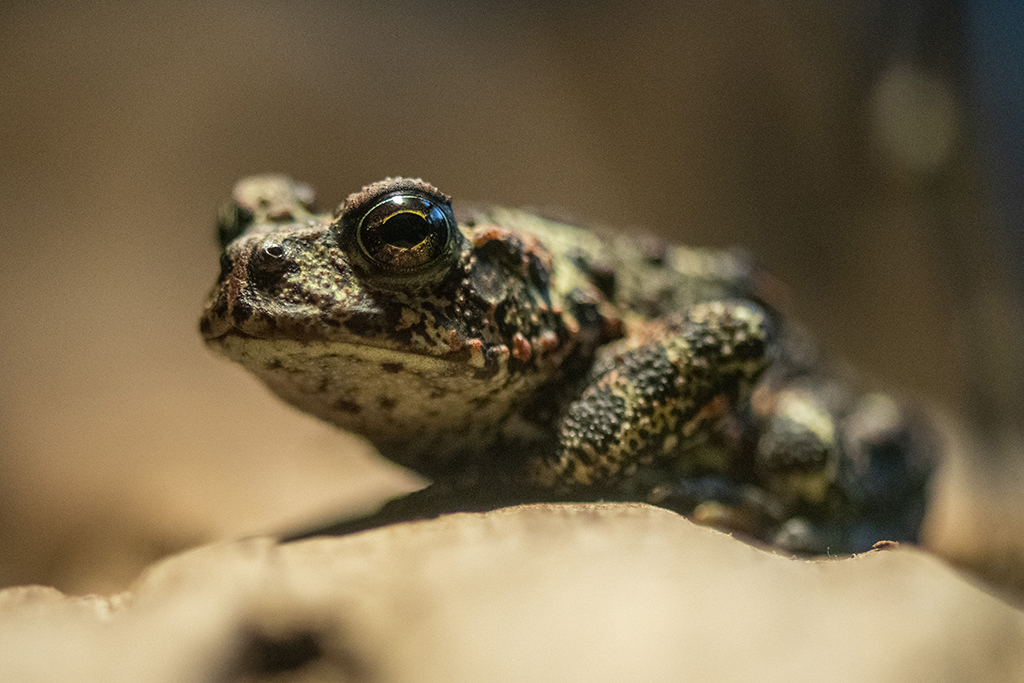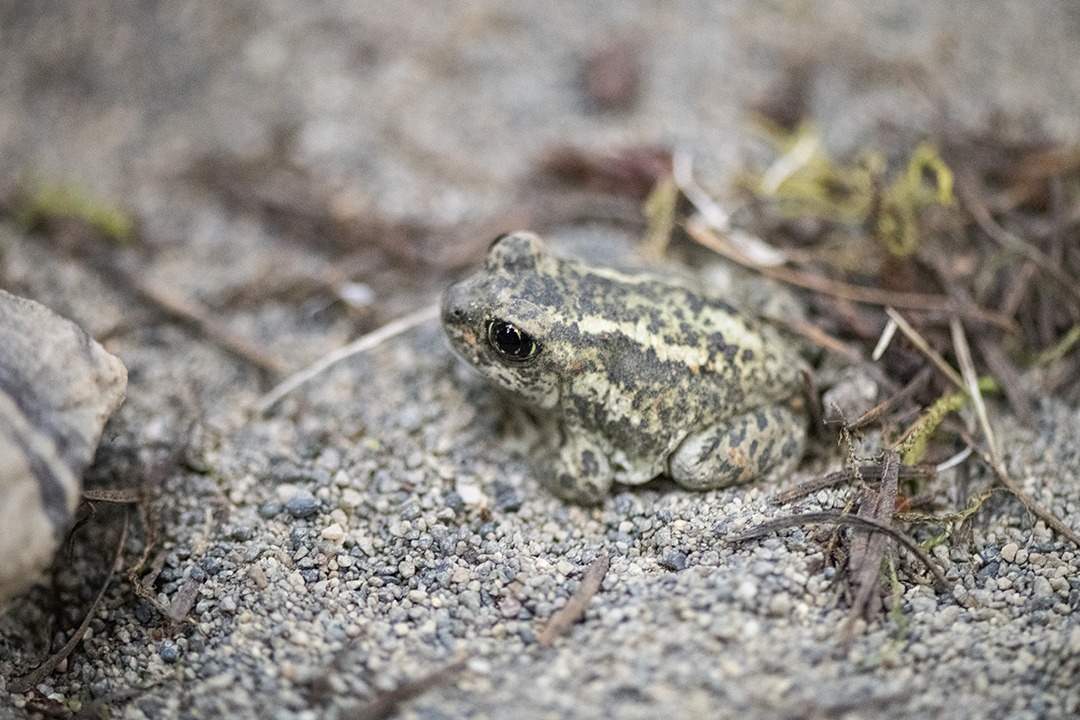World Frog Day is celebrated annually on March 20. Northwest Trek is home to a Northern leopard frog, Pacific tree frogs, Western toads, and a Great Basin spadefoot toad.
Northern Leopard Frog
Sprout, the Northern leopard frog, is an incredible ambassador for his wild counterparts. Once abundant throughout North America, northern leopard frogs rapidly disappeared from their native ranges in Washington, Oregon, and western Canada.

The species has been listed as endangered in Washington since 1999, and with only one known wild population remaining in the state, there is still a long path to recovery for the frogs. Likely causes of the frogs’ decline in the Pacific Northwest include habitat loss and degradation, disease, non-native species, and climate change. For the past few years, Northwest Trek has raised Northern leopard frogs behind the scenes, from egg masses to tadpoles to froglets, growing them large enough to have a fighting chance in the wild. Then, hundreds of frogs are released each summer at the Columbia National Wildlife Refuge in Eastern Washington. Keepers prepare the frogs for life in the wild by giving them food like crickets to encourage their natural ambush-style hunting behavior.
Pacific Tree Frog
Pacific tree frogs Cosmic, Fuji, and Ghost are all named after types of apples. Cosmic is the greenest color, Fuji has thin stripes and brown skin, and Ghost is a light brown color, almost white. Guests can often find all three high up in their habitat. They like to climb and settle into dark places, like moss balls and hiding holes.

Keepers say Cosmic, Fuji, and Ghost love to hunt crickets. On some days, keepers will tong-feed the frogs to build relationships. On other days, they will release crickets into the habitat to allow them to hunt independently.
Fun Fact: Pacific tree frogs change color based on the air temperature and humidity—a defense mechanism to reduce the likelihood of becoming a meal for a bullfrog, raccoon, heron, snake, or other predator.
Western Toads
Western toads Dumpling and Wonton are very active in their habitat and can often be seen swimming in their pool. Western toads can grow up to two inches in size. Keepers say Wonton is interested in eating and comes to any movement.

Fun fact: When frightened, toads can increase their size by inflating air sacs inside their body. This allows toads to wedge tightly in rock walls or burrows, making it difficult for predators to extract them.
Great Basin Spadefoot Toad
Great Basin spadefoot toad Whopper is a burrowing animal and can often be seen right underneath the sand in its habitat. Spadefoot toads are named due to shovel-like projections on their hind legs, allowing them to dig into sandy, loose soil. They can remain buried in the wild for months, helping them survive in dry climates.

Visit Cheney Discovery Center
Visit the frogs and toads inside the cozy warmth of the Cheney Discovery Center – behind Kids’ Trek – and encounter a tiny new world. Discover reptiles like the gopher snake, amphibians like the Western toad, and gastropods like the banana slug, king of slimy invertebrates. While the animals are fun to watch, there is plenty more to do in the Cheney Discovery Center! Grab a book and enjoy the reading nook, play in a puppet theater, visit the activity table with games and puzzles, and more.